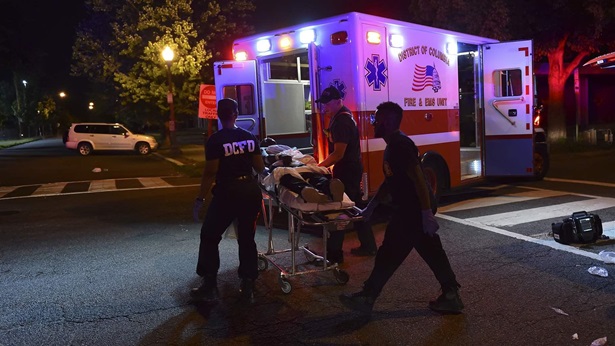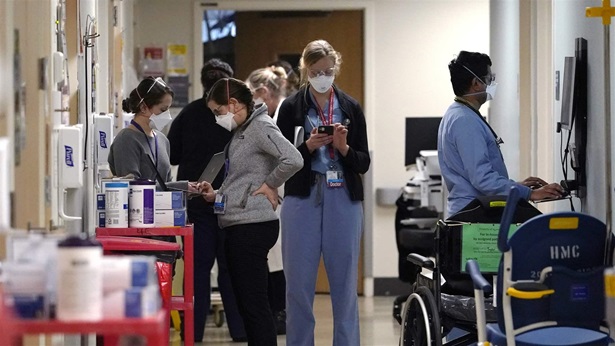States
Strive to Help SNAP Recipients Cope With Lower Benefits
STATELINE ARTICLE February 28, 2023
By: Marsha Mercer
Allison Dinner The Associated Press
The white words on a
red background are plain. “Important notice: SNAP emergency allotments ending
after February.”
If there’s any doubt,
the Colorado Department of Human Services SNAP webpage adds, “All Coloradans
who receive SNAP benefits are going to see a reduction in their monthly benefit
amount after February.”
In every state,
participants in the Supplemental Nutrition Assistance Program, commonly known
as food stamps, face the loss of pandemic-related benefits in March, if they
haven’t already lost them. States, community groups and food banks are
scrambling to help families cope and gear up for an expected wave of food
hardship.
“People are scared.
They’re anxious. This is a devastating change,” Karla Maraccini, director of
the Food and Energy Assistance Division of the Colorado Department of Human
Services, told Stateline. “We want to make sure nobody is caught
off guard in March.”
Colorado has a new,
toll-free SNAP phone line and its SNAP website includes tips for the transition
and a Food Finder link to locate the closest food pantry.
The average SNAP
participant in states that still had emergency allotments as of February will receive
$90 less a month in benefits, according to an analysis by the Center on Budget
and Policy Priorities, a left-leaning think tank.
“We’re saying these
families face a hunger cliff — more hardship and more food insecurity. People
don’t have a cushion,” Ellen Vollinger, SNAP director for the Food Research and
Action Center, an anti-hunger advocacy group, told Stateline.
In March 2020, as
COVID-19 swept the nation and the economy shut down, Congress gave states the
authority to ease application and eligibility requirements for SNAP and to hike
benefits with temporary emergency allotments.
The allotments were
expected to last for the duration of the federal public health emergency in
states that also had declared a public health emergency. But Congress in
December passed a bipartisan federal spending package that ended SNAP
allotments as of February 2023.
By the end of last
year, 17 states had dropped state public health emergency status, meaning SNAP
recipients in those states no longer received extra benefits.
The end of the federal
public health emergency, recently set for May 11, will trigger other changes in
SNAP that lower some benefits. Plus, Republicans in Congress are eyeing SNAP
for potential cuts in the debt limit debate. The federal government pays for
all SNAP benefits.
The spending package
that ended the allotments early also established a permanent Summer Electronic
Benefit Transfer for Children food service program. Families eligible for free
or reduced-price school lunches will receive a monthly $40 grocery benefit per
child when school is out starting in 2024.
The Summer EBT program
is “the most significant new nationwide nutrition program in the last 50
years,” according to Vince Hall, chief government relations officer at Feeding
America, the nation’s largest domestic anti-hunger network. But, he said, “as
critical as it is, it is not a replacement for solving the nutritional needs of
the whole family.”
STATELINE STORY February 13, 2023
States Scramble to
Replace Ripped-Off SNAP Benefits
More than 41 million
people purchased food with SNAP benefits last year, up from about 36 million in
2019, and the emergency allotments represented a huge inflow of federal funds
to states.
In recent months,
nearly $3 billion a month in additional benefits went to the states where the
allotments were still in effect, according to the Center on Budget and Policy
Priorities.
“I’m not aware of any
state trying to replace the emergency allotments,” said Ed Bolen, director of
SNAP State Strategies at the center.
The end of the
allotments comes as state legislatures are in session and legislators are
writing budgets for the next fiscal year, and a few states are taking steps to
lessen the impact of lower benefits. But so far, New Jersey is the only state
this year to enact SNAP legislation, according to the National Conference of
State Legislatures.
The Garden State has
twice raised the monthly minimum SNAP benefit — to $50 last year and to $95
this year. In most states, the regular monthly minimum SNAP benefit is $23
— and that’s after increases in 2021 and 2022.
The new minimum
benefit in New Jersey mostly will help older people and those with
disabilities, whose incomes have risen due to cost-of-living increases in
Social Security, said Carlos Rodriguez, president and CEO of the Community Food
Bank of New Jersey. A higher income leads to a decrease in SNAP benefits.
His organization,
which distributed food for more than 86 million meals last year, is preparing
for increased demand by buying more food at higher costs because of inflation.
A household survey in
December by Propel, a company that makes software SNAP recipients use to track
their benefits and other financial products, found that 30% of respondents
visited a food pantry in the last 30 days in states where emergency allotments
were no longer being issued, compared with 22% of respondents in states still
issuing emergency allotments.
In 2023 so far,
lawmakers in 27 states and the District of Columbia have introduced at least
131 bills to strengthen SNAP by expanding access to the program, decreasing
food and nutrition-related costs and providing emergency food aid, according to
the conference of state legislatures.
A bill introduced Feb.
15 in California would establish a $50 state minimum benefit in the CalFresh
program by January 2025. CalFresh is California’s SNAP program.
Last year,
Maryland raised the minimum monthly SNAP benefit to $40 for those 62 and older.
It was one of a dozen states that enacted 24 laws aimed at expanding or
enhancing SNAP, according to the conference of state legislatures.
More States Are
Forgoing Extra Federal Food Aid
In January,
Massachusetts Democratic Gov. Maura Healey proposed spending $130 million to
provide a bridge for more than 630,000 Massachusetts families, who would
receive a supplemental allotment equal to 40% of the federal benefit for three
months.
The array of state and
federal safety-net programs, often with different eligibility rules, can be
bewildering, so states are urging people to seek help determining the benefits
for which they qualify.
North Carolina, for
example, is encouraging pregnant women and mothers to sign up for the Women,
Infants and Children food program. In addition, the statewide NCCare360 network
is available to connect North Carolinians to health care, employment, housing
and social services.
“We know even though
the emergency allotments are coming to an end, the need is still there,” said
Madhu Vulimiri, deputy director of the Division of Child and Family Well-Being
in the North Carolina Department of Health and Human Services, which oversees
the SNAP program.
The bottom line:
“People will have less money to spend at the grocery store,” said Effie Rorke,
senior director of public policy and communications at Feeding Colorado, the
state association for Colorado’s five food banks, adding the need for food
remained high throughout the pandemic.
“We serve a lot of
people who are working or don’t get enough hours. Often food is the only item
where they have a little wiggle room,” she said.
The Food Bank of the
Rockies’ 800 members serve about half a million people a year over a wide swath
of Colorado and all of Wyoming.
“We’re not fully
meeting the need now,” said Erin Pulling, president and CEO of the Food Bank of
the Rockies. She and her partners are ramping up food purchases, donations and
fundraising and lobbying the state for more resources.
Thinking of the end of
the allotments, Princess Mack, 53, of Aurora, Colorado, who shops with SNAP
benefits for herself and two teenage daughters, said, “Does it make me nervous?
It does.”
Before the extra
benefits, she regularly visited a food pantry — something she hasn’t needed to
do in years. But she’s prepared to go back.
“I’m not as panicky as
some,” she said.




